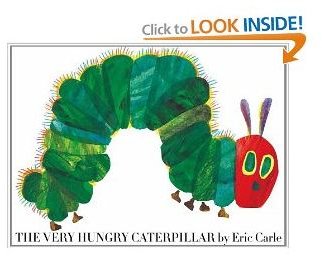Three Construction Paper Craft Projects: Preschooler-Friendly Activities
Construction Paper Everywhere
Construction paper is a staple in a preschool classroom. While many children are fond of using it just for coloring, there are many different construction paper craft projects preschoolers can create. Just by adding a few other materials that you probably already have in your classroom, you can put together some fun and challenging craft projects.
Preschoolers enjoy art projects that they can design and execute by themselves. All of the following activities are child-centered and focus more on the process of making art rather than the product the craft project yields.
Eric Carle Style
Materials Needed:
- Construction paper in several different colors
- Glue sticks
- Large white sheets of paper
- Several Eric Carle books (The Very Hungry Caterpillar; The Very Grouchy Ladybug; The Lonely Firefly)
When looking at picture books by Eric Carle, such as The Very Hungry Caterpillar, you will notice something very distinct about his
artwork. Much of his art is created by piecing together torn paper. Some of the torn paper looks like tissue paper, but much of it resembles construction paper, also.
After reviewing several of Mr. Carle’s books, invite the children to notice the artwork. Ask them how they think it was made. In the art center, have available several different colors of construction paper. Encourage the children to rip the construction paper into long and short strips, large and small squares and circles. Ask the children to separate the colors of construction paper into different baskets or containers. Using Eric Carle’s books as inspiration, ask the children to create their own torn paper artwork on a larger sheet of paper with glue sticks. Be sure to keep copies of the books on hand for children to look at if they want to. Keep this art project as open-ended as possible, allowing children to create with the torn paper in any way they want.
Construction Paper Families
Materials Needed:
- Construction paper in several colors and sizes
- Masking tape
- Glue sticks
- Clear tape
- Markers
- Crayons
Show children how folding a piece of construction paper into a cylinder creates a sturdy base that can stand up on its own. Also show them how rolling the paper into a cone makes an interesting shape for a hat. Have children study themselves in a mirror before inviting them to the art center. Encourage the children to make a person using the rolling and taping method you showed them earlier. Have the children use markers and crayons and any other materials available to create self-sculptures. Display these sculptures prominently.
Paper Chains
Materials Needed:
- Construction paper in different colors and lengths
- Good quality child-sized scissors
- Glue sticks
- Black marker
Making paper chains is one of the most popular construction paper craft projects. Preschoolers are still mastering scissoring skills, which means that making paper chains is a very developmentally appropriate activity for them. Before beginning, use the marker to draw straight lines on the paper to show the children where to cut. Encourage the children to cut on the line, and then show them how to loop the long strip into a link. Continue to show them another loop and demonstrate how to link another strip into the chain. Mastering the use of scissors is a complex developmental task. While making paper chains may seem like an easy activity for you, it is actually a very challenging task for a preschooler.
The Bottom Line
Construction paper crafts for preschoolers are some of the most economical art projects for your classroom. Take advantage of this inexpensive material by using it in new and innovative ways.
- Read the Bright Hub Education article on making sky-and-cloud pictures.
- Add some construction paper to autumn fun activities by making pumpkins.
By adding other classroom art materials, you can create many different construction paper crafts. Your preschoolers will find them challenging–and fun!
Resources
Creative Activities for Young Children by Mary Mayesky; 1995
Active Learning for Fours by Debby Cryer; 1997
